Jump to:
What is hair developer? And why the heck do you need it? We’ll answer these questions and much more in our complete guide. Read on to learn all you need to know about hair developer.
Considering Hair Developer?
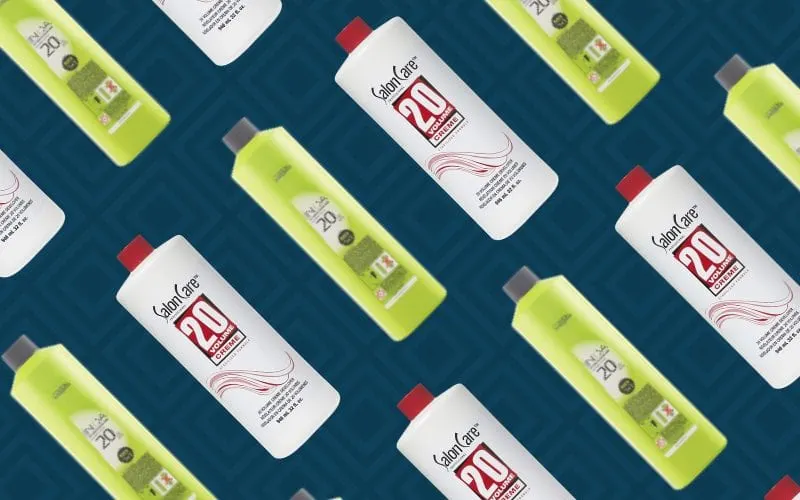
The percentage of American women who dye their hair has grown from 7% in the 1950s to 75% in 2001. The number for guys is much lower in the US, at around 7%, up from 2%.
If you fall into the “hair dyed” category, regardless of whether you have your hair colored in a salon or do it at home, you may not be aware of some of the processes involved in achieving that gorgeous color.
One necessary process is using a hair developer to lighten and/or permanently darken the hair. These chemicals play an essential role in hair coloring. Without it, your color simply wouldn’t look as good or last as long.
With that in mind, this guide will walk you through:
- What hair developer is
- Why you need it
- What it does
- How much you need to use
Let’s get started!
What Is Hair Developer?
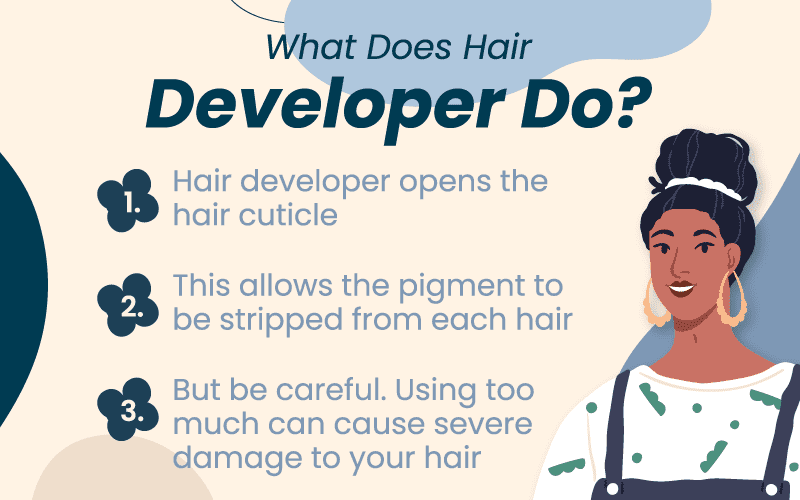
Hair developer is a creme or liquid made up of varying degrees of hydrogen peroxide. When mixed with hair dye (pigment), it allows color molecules to pass through the outermost, protective layer of the hair shaft. You can liken it to an activator or key to get into the hair shaft. Without it, dye pigments will only coat the hair shaft and wash away when you shampoo. With it, however, color molecules can pass into the hair shaft (depositing) or out (lightening) in order to permanently change your hair color.
Suppose you go to the salon to have your hair colored. In that case, you’ll likely have watched your colorist mix two separate liquids together before applying them to your hair. One of these is a hair developer.
Likewise, if you dye your hair at home, the box you bought from the drugstore or supermarket will have two bottles. Again, one is hair dye, the other is hair developer. You mix them together before applying them to your mane.
Suppose you want to buy professional hair color to use at home. In that case, you’ll have to buy your developer separately and use a specific volume depending on your hair type.
Types of Hair Developer
“What type of hair developer should I use?”
Unfortunately, there’s no set answer to this question. Remember, the hair developer determines the end result of the coloring process; that’s why it’s super important to choose the right one.
Developer strength is rated by the concentration of hydrogen peroxide in the product. For example, 10-volume developer (one of the lowest-strength developers) is made up of 3% H2O2. Developers with higher volumes contain even more hydrogen peroxide.
Hair developer comes in five different volumes. The one you opt for depends on the look you’re hoping to achieve. For example, if you just want to deposit color for a very gradual, subtle look, use a lower volume. If, however, you’re going all in and bleaching your hair for that sun-kissed beach look, you’ll need a higher-volume developer.
The higher the hair developer’s volume, the more the hair cuticles open, making it possible for more of your natural hair pigment to be stripped from your locks.
The critical thing to remember is that the volume you choose can affect the immediate and long-term results of your hair color.
Let’s take a look at the different volumes out there:
10-Volume Hair Developer
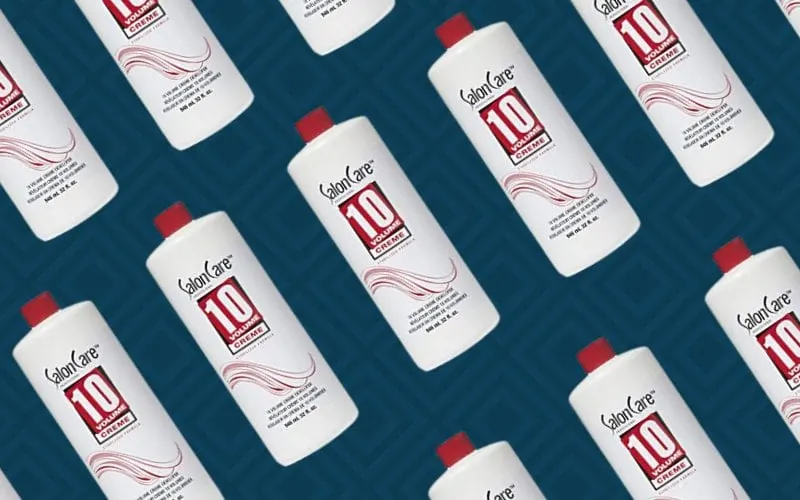
Hair developers can damage your hair. Fact. This volume hair developer is the one to go for if you’re aiming for the least damage and a gentler tone to your hair. It’s the obvious choice for anyone who doesn’t want to lift their base color; instead, they just want to add a tint or tone to their hair. 10-volume H2O2 is the standard for depositing permanent color on non-gray hair.
20-Volume Hair Developer
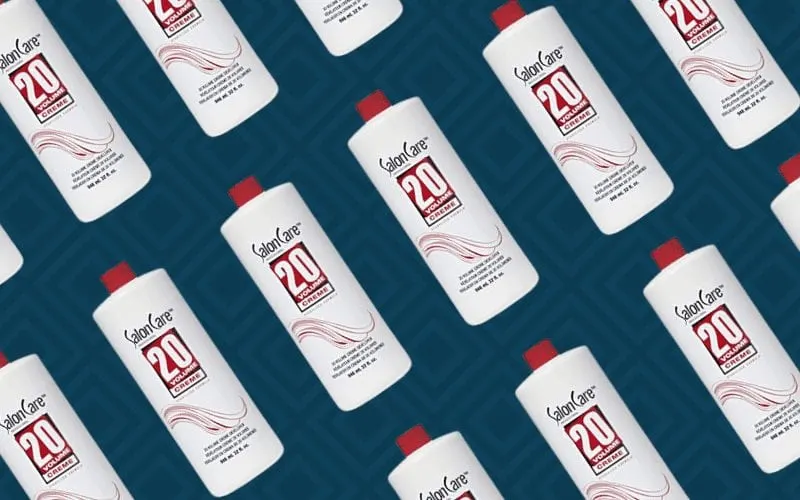
If you want to lift your hair color a couple of levels or have a lot of gray showing (50%+), then the 20-volume hair developer is your friend. This is the one you mix with permanent hair color to cover that gray.
If you have less than 50% gray, you can use the 10 volume instead but may only achieve a blending if your hair is particularly resistant. While you won’t get total coverage, the 10 volume will give your gray hair a highlighted look. If, however, your hair’s naturally blonde and you want to lighten it a bit, use a 20-volume developer.
30-Volume Hair Developer
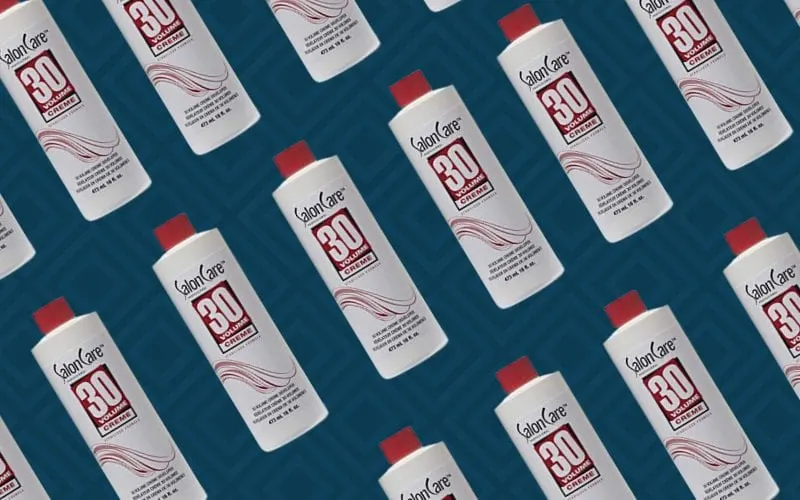
Used when lightening hair by more than a couple of levels (about 3 or 4) – it’s stronger, enabling the pigment to pass freely out of your hair shaft. It’s probably a good idea not to use this if your hair is very damaged because your hair could end up looking very dry and lackluster.
If your hair isn’t super porous and therefore doesn’t take color easily, 30 volume is a good bet for you. Some colorists will use this to lighten hair that’s light brown or medium brown hair.
40-Volume Hair Developer
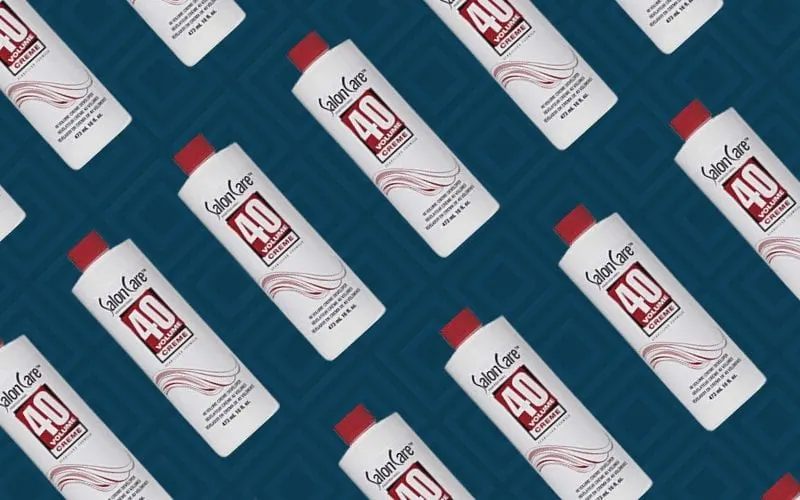
If you love highlights (who doesn’t?) and don’t want to use bleach, 40-volume devloper will lighten your hair by up to four or more shades. If you’re doing this at home, we recommend that rather than going all-in with the 40, do a gradual process using 20 or 30 instead.
Then, be sure to use a ton of conditioner in-between coloring. That way, you’re protecting your hair and your scalp.
Remember, this stuff is strong. If you have black or brown hair and use this, you’ll get lighter hair. But this strength can damage your hair and burn sensitive scalps, so be careful.
50-Volume Hair Developer
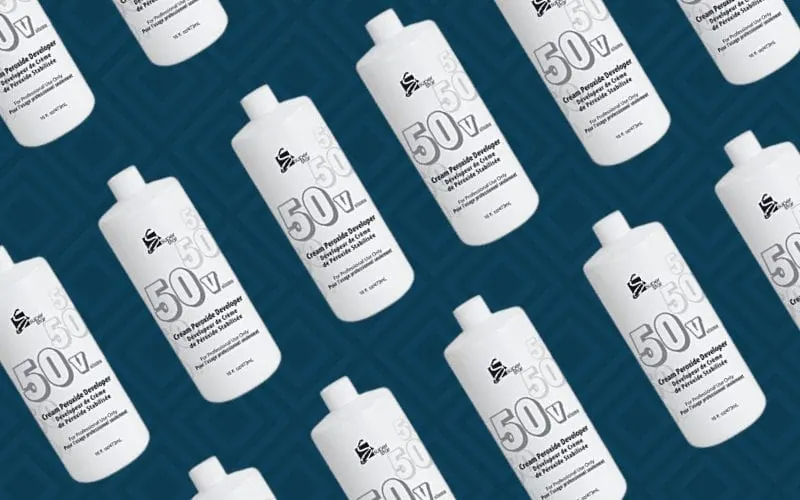
Yes, it exists, and no don’t use it. It’ll damage your hair, maybe even burn it. But, if you do go ahead, use a strong hair bond builder like Olaplex. If you use another hair repair treatment and lighten your hair gradually, remember to condition your hair and scalp each time.
Warning: You should never use any developer stronger than 30 volume on the scalp, and even 30-volume developer is pushing it. If left on the skin for too long, higher volume developers will eat away at the skin, resulting in a chemical burn. Chemical burns are serious business and can cause a full-thickness burn.
Do You Really Need a Hair Developer?
Yes, of course, unless you’re going for a temporary look. Some temporary home hair dye kits come without it, but our advice would be to lower your expectations. You don’t see drastic color changes with temporary dyes. If you want to really change your look, you will need to use developer.
How Much Developer Should You Use?
That depends. If the color you’re aiming for is close to your base color, i.e., no more than two shades different, the ratio is 1:1. I.e., if you use 100ml of dye, you also use 100ml hair developer. Simple.
If, however, you want to lighten your hair by three or even four shades, you need to use a 1:2 ratio, so if you use 100ml of dye, you use 200ml of the developer. This ratio will likely be adopted if you’re using 30 or 40 to achieve a lighter color.
So, What Is Hair Developer?
So, there you go; we hope we’ve answered the question, “what is hair developer?” Armed with your newfound knowledge, you’re all set to add color to your hair, or you feel better informed ahead of your next salon visit. Good luck!
